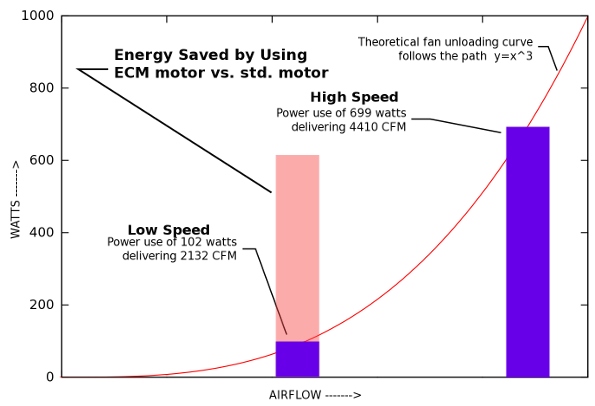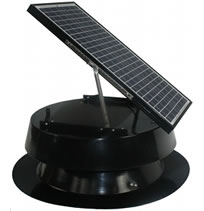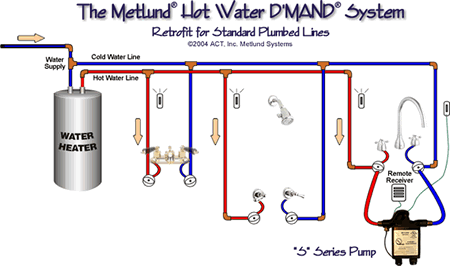The latest trend we see in whole house fan design is the inclusion of ECM motors (electronically commutated motor). Match that with an efficient blade and you get a great power profile and low noise.
Lets look at the AirScape 4.4e WHF whole house fan as an example. The graph below shows the energy use profile of the 4.4e as compared to the theoretical efficiency of a fan system. 102 watts on low speed!!
This tickles my engineering senses to the point I will probably upgrade my trusty AirScape 1.7 WHF with this new unit. 
More on AirScape Whole House fans including the 4.4e WHF:
http://www.hvacquick.com/products/residential/Whole-House-Fans/Whole-House-Fans





